The British Factory House - Oporto
Thurston Table in The British Factory House (A Feitoria
Inglesa -Porto)- Oporto, Portugal
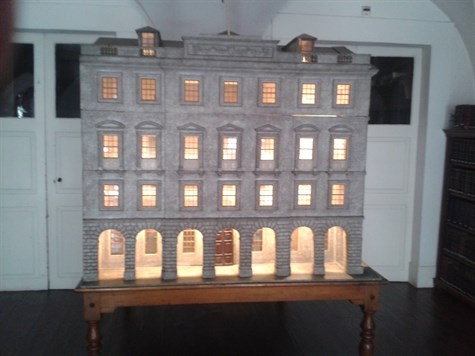
A model of The British Factory
House (A Feitoria Inglesa)
The Billiard Room is situated on the top right of the
building.
In 2014 we received an enquiry from
The British Factory House in Oporto to renovate their
'Billiard' table. After some emails to and from asking
questions and receiving pictures it became obvious that this was an
early example of a Billiard table.
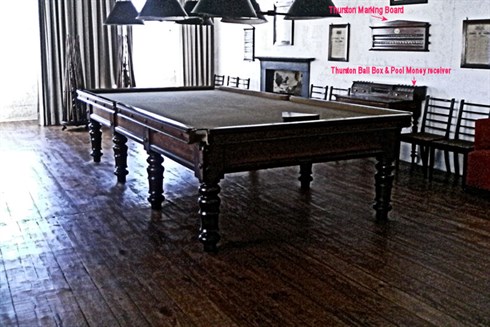
The Billiard Room
Marked in the picture is the
Thurston Marking Board and the Thurston Ball & Pool Money
Receiver. These were sold as seperate units as shown in the picture
taken from a Thurston catalogue circa 1890
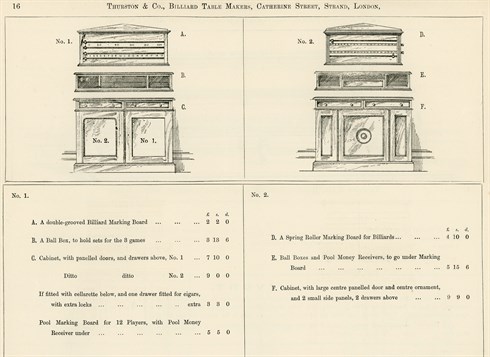
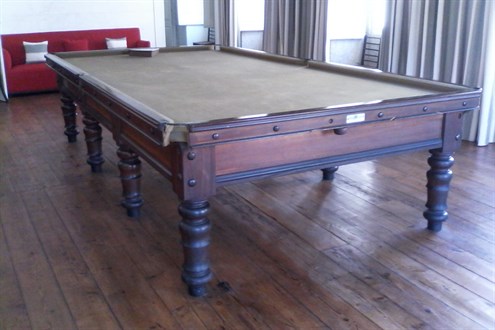
The Billiard Table
The cushion plates help indicate the
age -
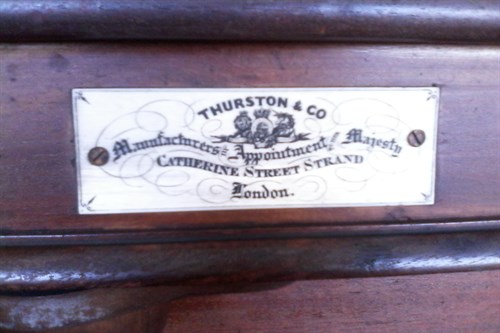
The Catherine Street address meant
that the table was pre 1901 (Thurston moved to Leicester Square in
1901) and the plate on the other end referring to Patent No. 1480,
we believe refers to the patent for vulcanised rubber made by
Thurston in 1845. So we knew we were dealing with a
table that was at least 115 year old and was possibly older.
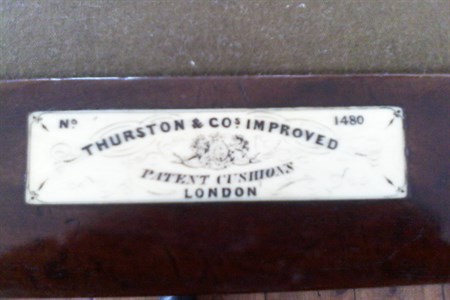
On examining the pictures of the table it became clear that
little or no recovering or renovation work had been carried out
since it was installed. It had the built up strip rubber in the
cushions which was covered both in the billiard cloth as well as
the white linen under cloth.
As it was realised that the work would not just be fitting new
rubber and recovering the bed and cushions but would require some
serious wood work on the cushions to be able to fit modern rubber
some local help by way of a wood workshop would be required. Mike
Atherton the Thurston Works manager volunteered to carry out the
work and so flew out to Oporto with his tool kit and with the cloth
and parts required in April 2015.
During the renovation work he took several pictures that showed
interesting features he discovered for example :-
The following picture shows part of the cushion rubber support
which indicates that the last time the cushions were worked on was
October 1887.
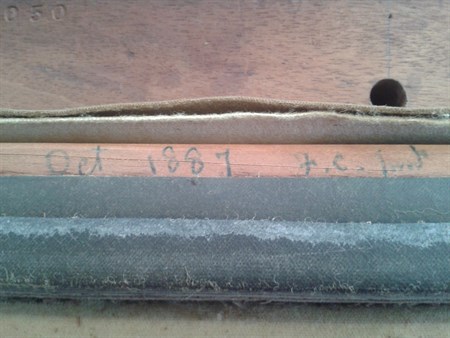
In the picture below you can see the rubber strips that made up
the cushion rubber and also the round shape to the nose of the
rubber unlike the 'L' section rubber used today.
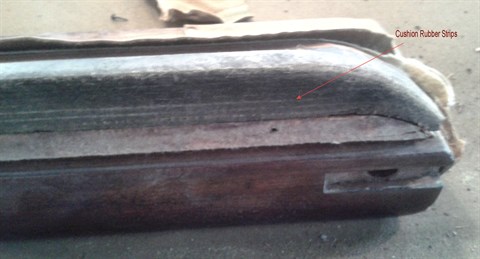
Another picture set is a view of a corner pocket before the work
was carried out and as you can see the table can not have been
played on for many years!
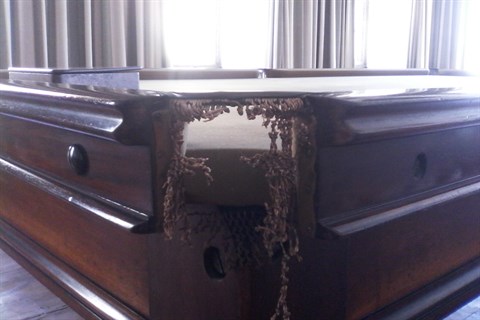
When Mike was on site he sent back a picture of the number
stamped on the cushion and also the table frame number to see if we
could find them in our old foreman's table book or in our old
Ledgers.
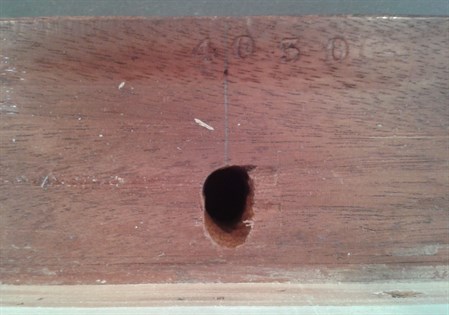
The cushion number 4050 was stamped into all six cushions and was
different to the table number. However this sort of thing is
recorded in the foreman's note book were a few entries show that
cushions with a different number to the frame went with the table
frame numbered.
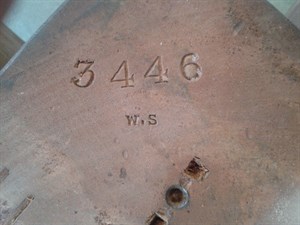
The frame number was clearly
stamped on the top of the leg square along with, we presume, the
table makers initials.
Although the earliest date in the foreman's note book is
December 1896 along with a table number 5936 meant that we could
not trace the actual manufacturing date. We do have Sales Ledgers
prior to 1886 they are for British Sales not export as the Export
Sales Ledger were lost when Thurston Leicester Square premises were
bombed in 1940.
So trying to date the table is a little difficult, if we are
correct in the patent on the cushion plate referring to vulcanised
rubber cushion being 1845 and the Foreman's note book earliest
entry in late 1886. Along with the thin, 1inch (25mm) thick four
section slate bed, it points to its age being closer to 1845 than
the cushion recovering date of 1887. Our best guess is that the
table is circa 1850.
The renovation work carried out by Mike Atherton, Thurston's
Works Manager, required all his knowledge and skills built up from
his many years experience both in the factory and on the road as a
service fitter. The cushions had to be adjusted to take the modern
rubber, so the cushion blocks had to be adjusted to allow for the
original nose projection. The height of the cushion also had to be
adjusted so that the balls would strike the cushion correctly. The
cut for the pockets had to match the original so that the point of
fall stayed the same. So this meant that the middle pockets with
the pocket plate set quite far forward would mean that it was more
difficult to pot a ball in the middle pocket that on a 'modern'
table.
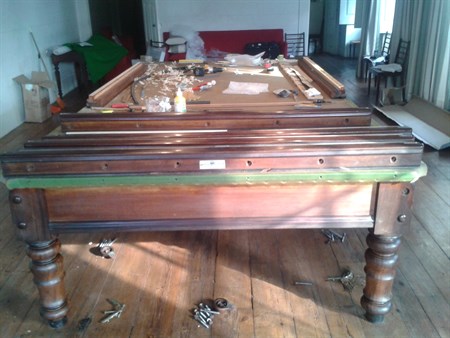
Work in progress
The pictures below show some of the
work that Mike had to undertake to achieve the full renovation of
this early Billiard Table.
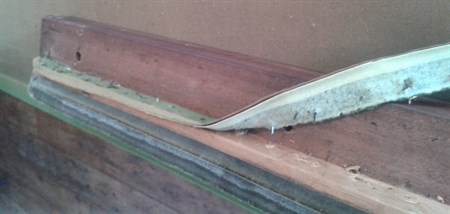
The Old cloth and undercover
being removed. The old tacks were 'reluctant' to be
removed!
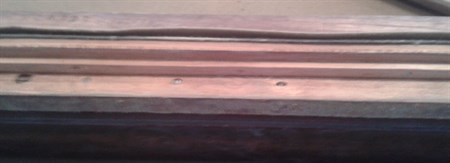
The shape of the 'old' original
cushion block shown once the rubber was removed
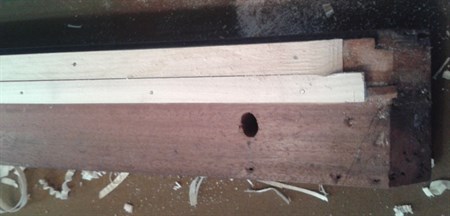
New profiling of cushion blocks - New timber glued into
position to ensure correct projection of cushion
rubber.
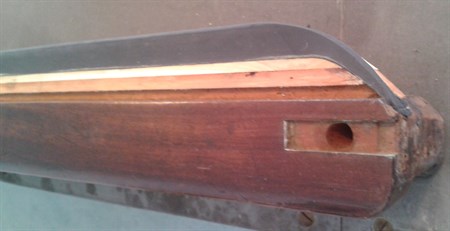
New rubber fitted - ready for
the next task before recovering in Billiard Cloth
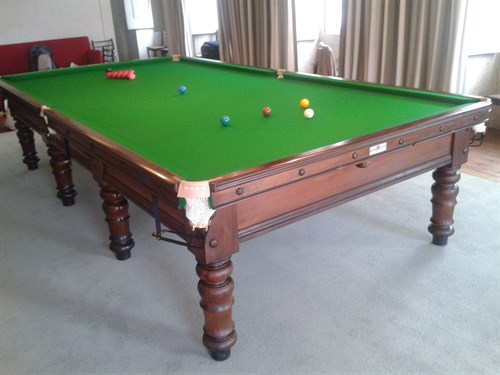
The finished job - ready
for play.
Snooker rails were fitted rather than bag pocket nets so that
the balls, particularly from the middle pockets, could more easily
be collected. Notice that the table now also sits on a carpet
square. Mike help with the fitting by removing the slate bed so the
frame could be lifted and then replaced onto the carpet.
It was with surprise and pleasure that in January 2016 an email
was received from Rui Coelho which had attached a translation of
this article and so with his permission that translation is shown
here -
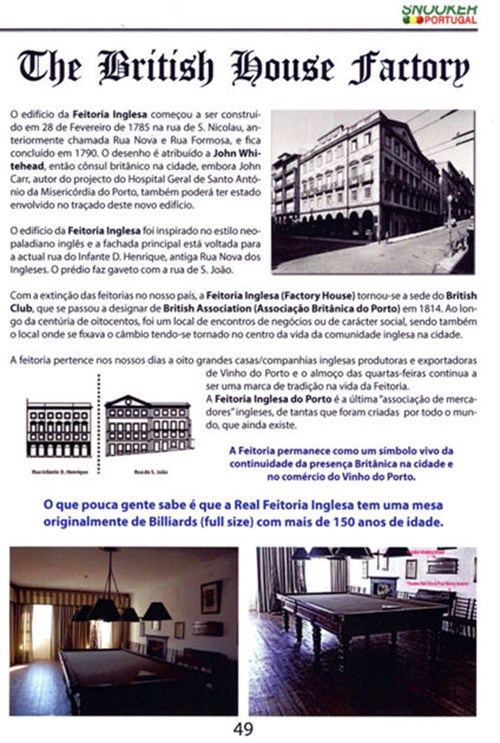
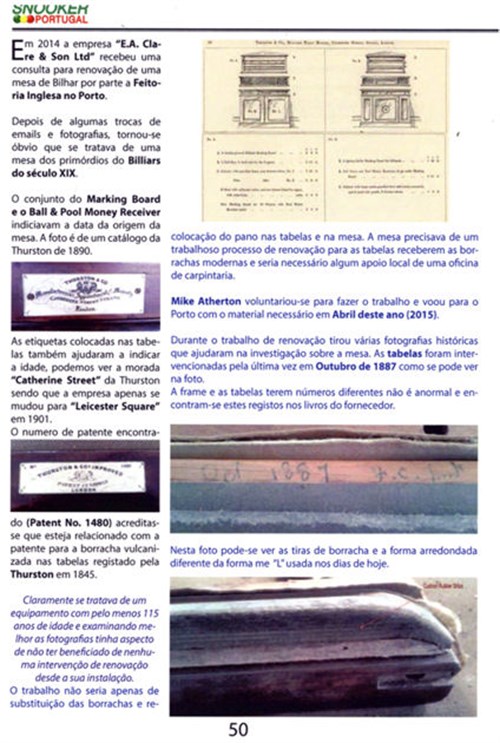
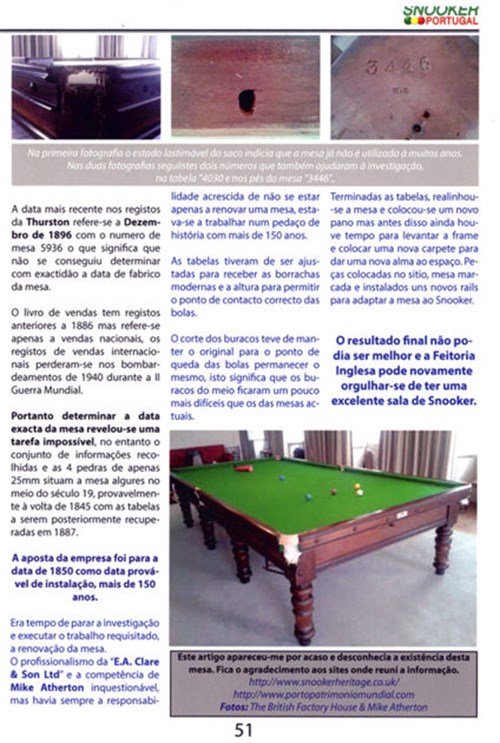
Acknowledgements :-
Pictures - The British Factory House & Mike
Atherton
Catalogue picture from the Snooker Heritage
Collection
Translation of article into Portugese and additional picture
-Thanks to Rui Coelho
© E.A. Clare & Son Ltd.
2018. © Peter N. Clare 2018
Reproduction of this article allowed only with the permission from
E.A. Clare & Son Ltd.
phone -
44(0)151 482 2700
email -
thurston@eaclare.co.uk
eshop -
thurston.co.uk

